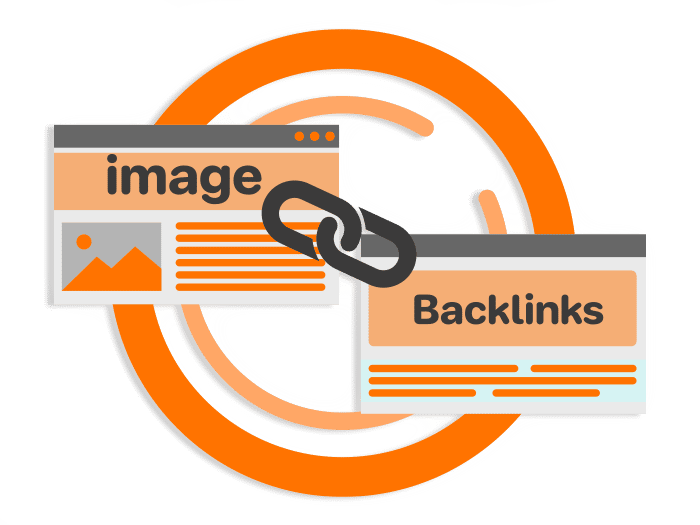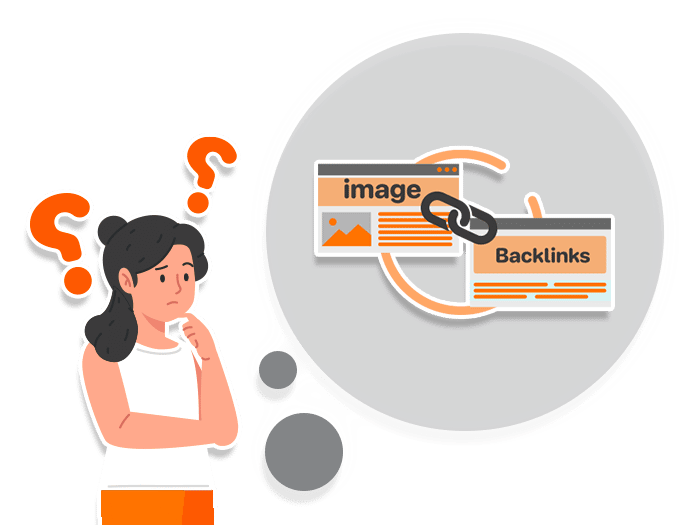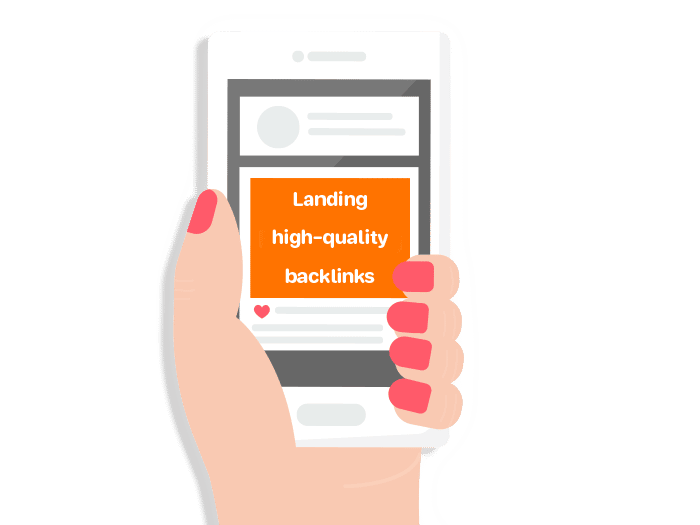
Here Is How You Can Use Reverse Image Search to Build More Backlinks to Your Blog
High-quality backlinks demonstrate that a website’s content is both visually beautiful and user-friendly.
More than 1.8 billion photographs were posted and shared online every day in 2014. They make it simple to flee. It’s simple to uncover backlinks that haven’t been claimed using a reverse image search. How to do it exactly, we will find out below.
What is reverse image search?
All marketing images on your website, social media platforms, and elsewhere are protected by your intellectual property (IP) rights. Perform a reverse image search to see whether your photographs are being used without your consent.
You may do a reverse image search to hunt for anything on the Internet by utilizing images instead of words. If you share an image with your search engine, it will be able to locate related photos. It has the potential to make photographs more useful and fascinating. It is capable of determining what fresh images are. Not only using keywords, but you can also use images to search for everything you want from the Google search engine. After doing the research, you will find a lot of things about the particular images.
Google has picture information. Here are a couple such examples:
- File type
- Image size
- Other sizes of the same image
- Pages the image appears on
- Related images
- Pages with matching images

Why use reverse image search?
To uncover relevant information, popular photos, and online photo sources, you can utilize Google’s reverse image search. You can get much more out of reverse image search in the digital era. Here are the sensible reasons why you must use reverse image search to get more backlinks to your blog or site.
Measuring the impact of your content marketing
Imitation is the highest form of flattery, and the utilization of your images demonstrates that your content struck a chord with your audience.
Identify backlinking opportunities
To locate sites that have used your image without your permission, utilize reverse image search. You gain a link to your site when the image is attributed on another website. Ensure that the sources of the results are properly credited. If not, you can request an email with a link.
Protect your intellectual property
This tool can help you locate websites that have used your photographs. There were images that looked like maps of the Hallam tube on the results pages. There have been images discovered that appear to be identical but are in fact significantly different. This occurs when someone takes your image and adds their logo to make it appear to be theirs. This is an infringement of your right to express yourself.
Stand out from your competitors
Nothing is more frustrating than spending a lot of money on stock pictures just to discover that your rivals are utilizing them. You might be able to avoid this trap if you search for websites that use your image.
Context
You might wish to look at other websites with similar images to prevent accidentally drawing links. The same way you promote your vegetarian café can work effectively for a burger joint
Identify copyright violations
It is simpler to identify photographs that do not have copyrights when using a reverse image search.
Reclaim your backlinks
You might be able to locate your photographs on other sites and gain backlink by using a reverse image search
Pages that talk about you but don’t connect to your website are rather prevalent
Set up a Google Alert to notify you when your firm is referenced, and then investigate to see whether a backlink was cited.
Images, despite being frequently disregarded, may produce backlinks. To identify websites that utilize your image, use Google’s reverse image search.
Look for photographs, infographics, GIFs, and even your own logo to find backlinks to your company’s website.

Which sites should you go after?
Tactical thinking is usually superior to strategic thinking. Don’t employ too many methods at once.
Keywords must be adequately tuned for search engine optimization to operate (SEO). If you solely focus on keyword optimization, your campaign will not perform as effectively as it might.
The same thing occurs when doing a reverse image search. This has ramifications for backlinks in general.
It is highly important not to waste time visiting every webpage.
There are certain connections that are superior to others. Create links to climb the SERPs.
What factors have a significant impact on how well a website performs on search engine results pages?
A criterion of site’s high authority
A site with strong authority has a DA score of at least 70. A site with more authority may not follow the same regulations as a site with less power in particular companies.
Because the pet industry has fewer websites than the business or marketing industries, a pet website with a domain authority of more than 55 is regarded to have high authority.
On the DA75 websites, there is a lot of mediocrity. Even if a website has a high DA, it does not automatically imply that it is excellent.
Because it is difficult to get close to individuals in power, businesses that develop ties demand exorbitant fees. Before making a decision, I would investigate link-building services.
Landing high-quality backlinks
Guest Posting
This is still the most reliable way to get the most incredible backlinks from incredible websites. However, when we talk about guest posting for high authority links, we mean an incredibly high quality of content.
For example, a couple of years back we did a legitimate guest post on HubSpot (DA 92 website) for our client in the real estate space.
We pitched them some genuinely amazing ideas and explained what the article would be about. We also used our client’s own persona for outreach, so we had a lot of social proof and credibility behind us.
We consider this a fair trade – HubSpot received 100% free content from us, and one of our best writers spent over 10 hours carefully crafting the content, researching sources, and putting together images.
That guest post now has dozens of sites linking to it, and it ranks #1 on Google for ‘real estate business and ‘starting a real estate business’. To be honest, landing this guest post would easily be worth $10,000.
You just can’t actively achieve these links any other way unless you get lucky and a writer decides to cite your source without your knowing.
Where 99% of people’s guest posting fail is in their approach. They use sloppy outreach and they create generic listicle-style content.
We come up with amazing content ideas using keyword analysis, and our content is created by amazing writers. We create a no-brainer proposition for websites, by completing the whole content creation process for them to an insanely high standard.
Of course, in many instances, the website is going to respond to you asking for money. If that happens, you’ll need to consider whether buying backlink is the right option for you. You could reach out if you want to dig out more about this.
HARO
HARO (help a reporter out) is a platform that connects journalists with sources.
Writers from big publications like GQ, Business Insider, and Vice are active on the HARO platform.
The process is very simple – Journalists tell people what insights they’re looking for, and you email them your insights.
If you’re successful, the journalist will mention your comment in their article, and they’ll link to your website.
It’s a great, scalable way to build lots of good links to your homepage
Link Exchanges & Swaps
This is a very underrated strategy in 2022, and if done correctly it can be incredibly safe. The idea is very simple – Most established sites will have an SEO team, who understands the value of links. They already understand the value proposition of earning them a link.
Why do link exchanges work…?
Internal SEO teams and marketing teams understand the value of link building, and generally, they’re happy to link out to you provided your website is genuinely relevant and equally as good as theirs. Of course, on the condition that you earn them a link in return. You can either link to them from your own website or get them a link from another website – perhaps a site that you’re planning a guest post on.
It’s a simple transaction that works. Of course, you do need to be smart about it and get creative, because engaging in overt link swap schemes is against Google’s rules.
We’ve talked about link exchange strategy in more detail here, so use this guide if you want to do it in an effective manner.
PR OUTREACH
This is the strategy that everybody idolizes but is exceptionally difficult in practice. It comes under many names and guises – SkyScraper, Data-Driven content, Journalist outreach, etc.
But it basically amounts to the same thing – Create an incredible piece of content and show it to the right people. We’ve developed a methodology to consistently land PR backlinks, but it’s tough.
One trending strategy right now is creating curated reports, which is essentially re-purposing data that already exists and putting it together in an attractive way
For example, Fastmetrics put together a list of broadband speeds by country. They simply use data from other sources on the internet (they mention their sources throughout the article) and the page has hundreds of high authority links pointing to it. This is a great example of re-purposing other people’s data sources.
For more ideas on linkable assets, we’d recommend seeing the comprehensive guides from your SEO team experts. Go after evergreen keywords that journalists are searching for.
The beautiful thing about this strategy is that if you build a few good links to give the page that initial push, then the rest of the links will come on autopilot. We only actively built a few links and ended up landing a ton of great links passively because the content started showing up on Google results.
The reason is that these are the types of keywords that journalists and writers are looking for sources on. Journalists LOVE searching for keywords around statistics and data points in any industry.
In another example, Junto Digital released an article a few years ago called ‘SEO statistics’ – They simply use data from other sources on the internet, and the page has thousands of high authority links pointing to it.
The holy grail of link building is to earn high authority backlinks without lifting a finger, and this strategy helps to achieve that.
Track every image on your blog or website
This next tip will really come in handy if you have a smaller site and can spend some time researching. (Or if you want to be extremely thorough.)
If you’re an established photographer, one of the things that might leave you awake at night or worse, frantically toiling away on your laptop, is the thought that someone somewhere is using your images illegally and making money in the process. Thankfully, there are some options to fight this growing menace. Photographer Anthony Morganti shares some methods to find your stolen images on the internet:
Search your brand or name on Google

The easiest way to find whether someone’s using your images is to Google yourself. Some websites, when they “borrow” a photographer’s images, give credit somewhere.
Periodically searching for your name or website (in case you’re getting linkbacks for the “borrowed” images) can be quite a chore. If you don’t want to get stuck in that loop, Google Alerts is an alternative.
When you set up an alert, Google will periodically scan the internet for your search phrase. If it finds anything relevant it will email you the result. Don’t forget to put quotation marks around your search phrase, otherwise, Google will send you results that have any combinations of the search words, and not necessarily in the order, you want it.
You can change the frequency of the updates to daily or weekly or even instantly. Pretty powerful stuff!
Reverse image search
The Reverse Image Search is yet another very powerful tool.
Go to Google.com and click the Images link in the top right-hand corner. Click on the camera icon beside the search box. There are two different ways to search: you can either insert the URL of the image or upload the image to Google.
This is a whole lot easier on a Chrome browser. All you have to do is right-click the image and click “Search Google for image”. Google will then return matching results of the image in question along with visually similar images. Doing the revere image search by yourself requires a lot of effort and time. But you can always hand this over to someone.
It’s not too expensive to hire someone on Fiverr or other freelancer sites (but make sure whoever you hire has good reviews).
Scale this tactic
Reverse image search link building isn’t just effective and repeatable; it’s also scalable. There are a few ways to increase the volume of backlinks you get from this tactic each month.
Track more images
First, you can create and track more images. Generally speaking, the more images you publish on your site and track with Image Prospector, the more outreach prospects you’re going to find.
If you’re building links for a photography website, then you’ll probably always have new images to track. However, if you need help scaling your image creation, you can use an unlimited graphic design service.
Optimize your images
Second, you can optimize your images to rank higher in Google Images. Most sites that copy your images find them there, so gaining visibility will lead to more image credit link opportunities.
Search different types of images
And lastly, don’t forget to search for different kinds of images. Images created for your blog posts are good, but you can also upload your company logo and personal avatars to find interesting link reclamation and marketing opportunities.
Verdict
Images offer a powerful way to build links because they’re embeddable, and their visual nature also makes it easier to explain complex topics. That’s why infographics can work so well.
Just remember that not everything makes sense as an image. You shouldn’t try to force your content into this format just to build links. It won’t work. Countless infographics have failed miserably precisely for that reason.
LEARN MORE: HOW TO USE GOOGLE IMAGE SEARCH FOR GAINING TRAFFIC
